Flowing Data has developed a very nice summary of divorce rates by occupation. Have not seen a better summary of this information.
Link: http://flowingdata.com/2017/07/25/divorce-and-occupation/
Flowing Data has developed a very nice summary of divorce rates by occupation. Have not seen a better summary of this information.
Link: http://flowingdata.com/2017/07/25/divorce-and-occupation/
The hardest part about talking about divorce rates is that most of the reports in the news are wrong….(see comments here about this).
The good news is that sociologist, Philip N. Cohen, who writes the blog, Family Inequality, gives nice description of how life tables are used to forecast the divorce rate. His is a bit of his post…
Life table says divorce rate is 52.7%
After the eternal bliss, there are two ways out of marriage: divorce or death.
I have posted my code and calculations for divorce rates using the 2010-2012 American Community Survey as an Open Science Framework project. The files there should be enough to get you started if you want to make multiple-decrement life tables for divorce or other things.
Divorce rates from countries across the world are collected by the United Nations. Although we are in 2016, divorce rate information for 2013 is just being completed. I have posted an easily readable graph of 71 countries reporting here. You can find the original source of this data at the UN Demographic Report. They have a little data for 2014.
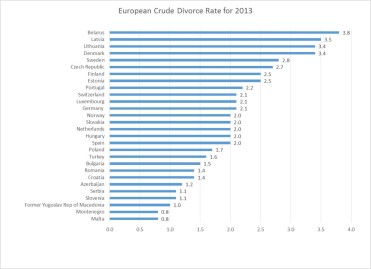
With only 27 countries reporting, the European divorce rates in 2013 indicate that the countries with the highest divorce rates are: Belarus, Latvia, Lithuania, & Denmark. Those with the lowest divorce rates are: Former Yugoslavia Republic of Macedonia, Montenegro and Malta.
See more world divorce trends.
These data are from Eurostat.
This document summarizes the long-term trends in marriage and divorce in the Untied States between 1867-1967. Much of this can be found elsewhere, but there are some fun bits of historical trivia that show how marriage and divorce have changed and not changed over this historical period. Here are a couple of sample tables. 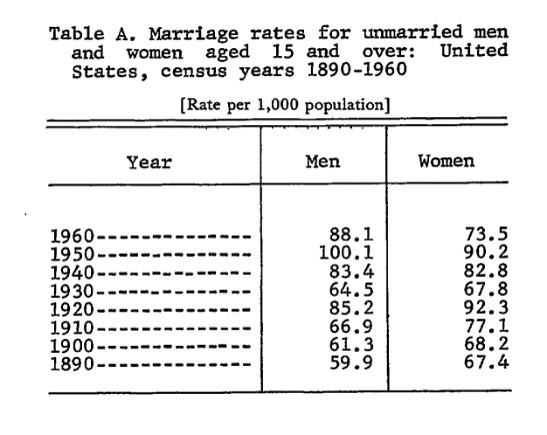
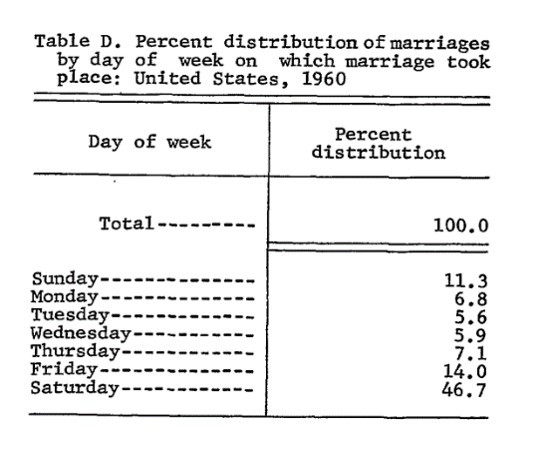
Eurostat periodically issues some nice charts and explanations of marriage and divorce trends in the OECD countries. Here is a sample of their work. Complete report on these trends. The report states,
“The crude divorce rates and their changes from 1970 to 2008 are presented in Chart SF3.1.E. During this period, divorce rates increased in most countries, except for Estonia and Latvia where divorce rates were high in 1970 (the increase in divorce rates in the United States from a similar base was also very small). There were large cross-national differences in crude divorce rates in 2008, and ranged from a low of less than one divorce per 1000 inhabitants in Chile and Mexico, to over 3 per 1000 inhabitants in Belgium and the United States.”
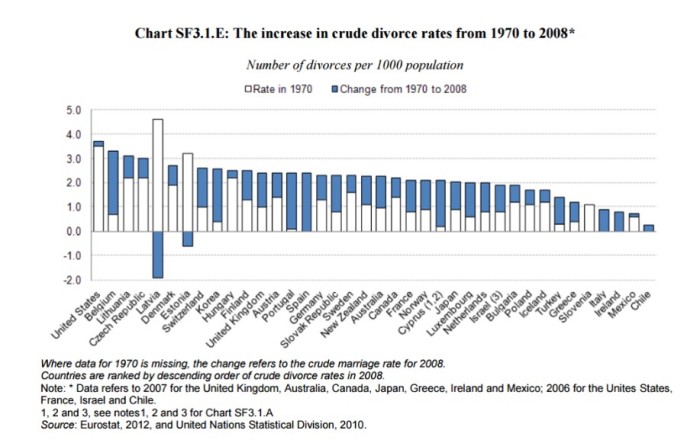
Professor Philip Cohen (blogger of Family Inequality) provides a short description of how divorce rates vary by ethnicity, age, education and length of time married. A good reminder that the “average” divorce rate doesn’t tell us much about the risk to specific individuals. (just over 1 minute long).
In January 2015, I updated the 2011 World Divorce Rate data and created this figure to illustrate the overall divorce rates. This represents the most current data across the world that is consistently reported to the United Nations. Many countries that have not yet reported 2012 or 2013 data such as the United States and Great Britain are included in this figure. Also, there are 70 countries that have reported their 2012 divorce rates and 11 countries that have reported 2013 data. The original data can be found in the United Nations Demographic Yearbook.
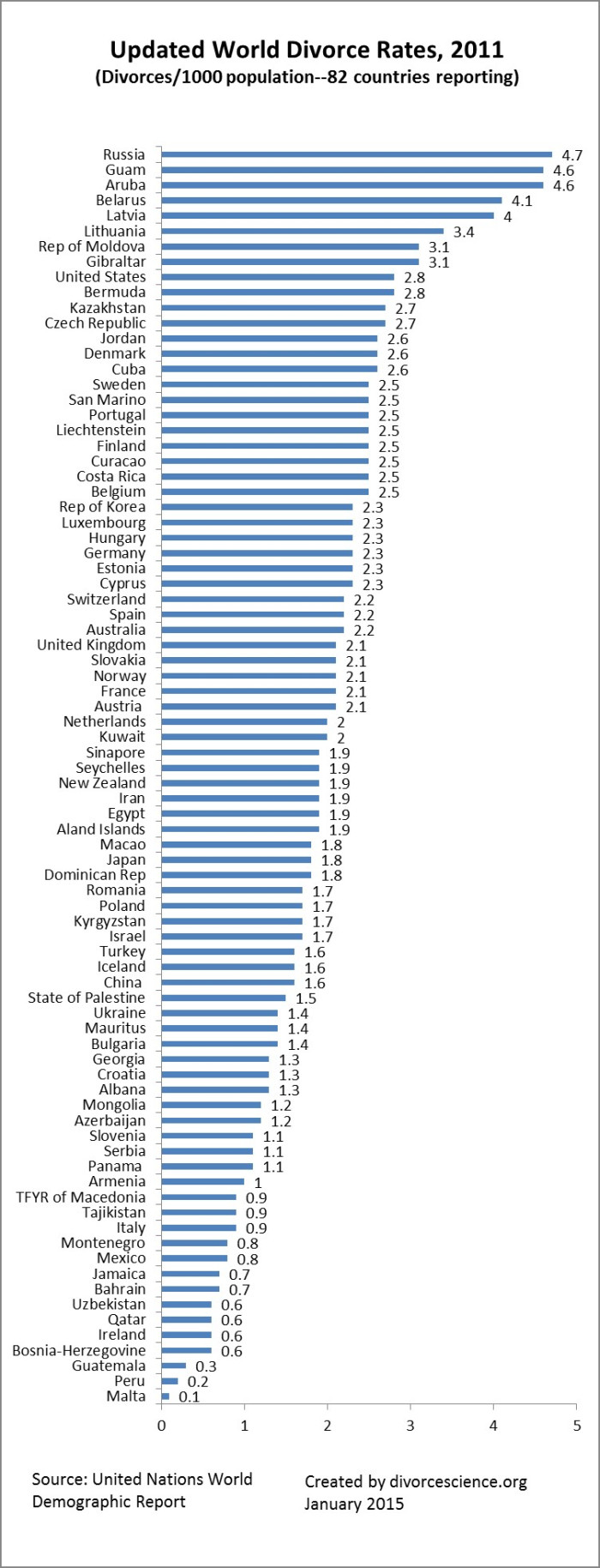
Eleven North and South American countries have reported divorce rates to the United Nations. Aruba has the highest divorce rate and Guatemala had the lowest divorce rate.
